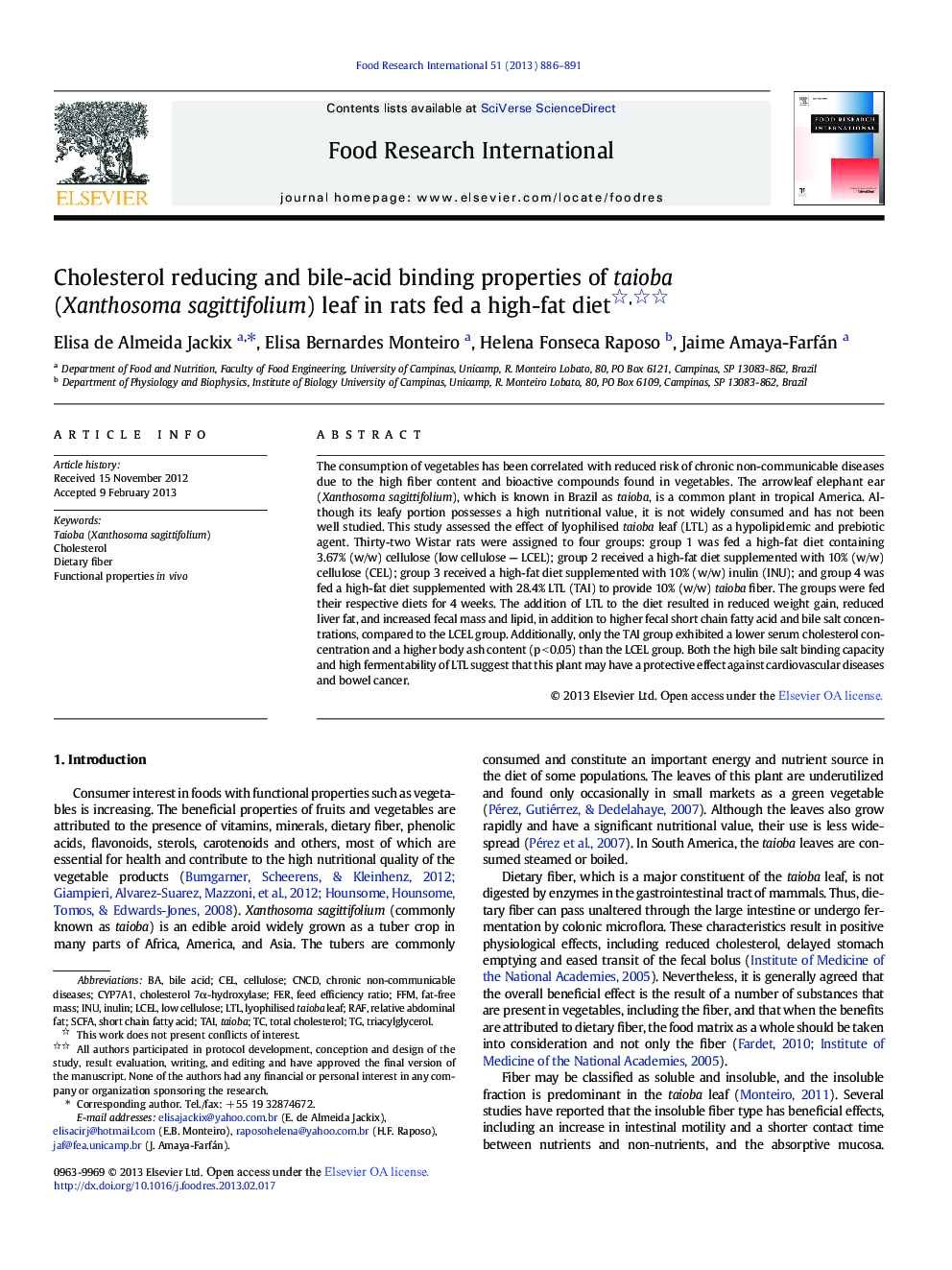| کد مقاله | کد نشریه | سال انتشار | مقاله انگلیسی | نسخه تمام متن |
|---|---|---|---|---|
| 6398112 | 1330680 | 2013 | 6 صفحه PDF | دانلود رایگان |

The consumption of vegetables has been correlated with reduced risk of chronic non-communicable diseases due to the high fiber content and bioactive compounds found in vegetables. The arrowleaf elephant ear (Xanthosoma sagittifolium), which is known in Brazil as taioba, is a common plant in tropical America. Although its leafy portion possesses a high nutritional value, it is not widely consumed and has not been well studied. This study assessed the effect of lyophilised taioba leaf (LTL) as a hypolipidemic and prebiotic agent. Thirty-two Wistar rats were assigned to four groups: group 1 was fed a high-fat diet containing 3.67% (w/w) cellulose (low cellulose - LCEL); group 2 received a high-fat diet supplemented with 10% (w/w) cellulose (CEL); group 3 received a high-fat diet supplemented with 10% (w/w) inulin (INU); and group 4 was fed a high-fat diet supplemented with 28.4% LTL (TAI) to provide 10% (w/w) taioba fiber. The groups were fed their respective diets for 4 weeks. The addition of LTL to the diet resulted in reduced weight gain, reduced liver fat, and increased fecal mass and lipid, in addition to higher fecal short chain fatty acid and bile salt concentrations, compared to the LCEL group. Additionally, only the TAI group exhibited a lower serum cholesterol concentration and a higher body ash content (p < 0.05) than the LCEL group. Both the high bile salt binding capacity and high fermentability of LTL suggest that this plant may have a protective effect against cardiovascular diseases and bowel cancer.
Journal: Food Research International - Volume 51, Issue 2, May 2013, Pages 886-891